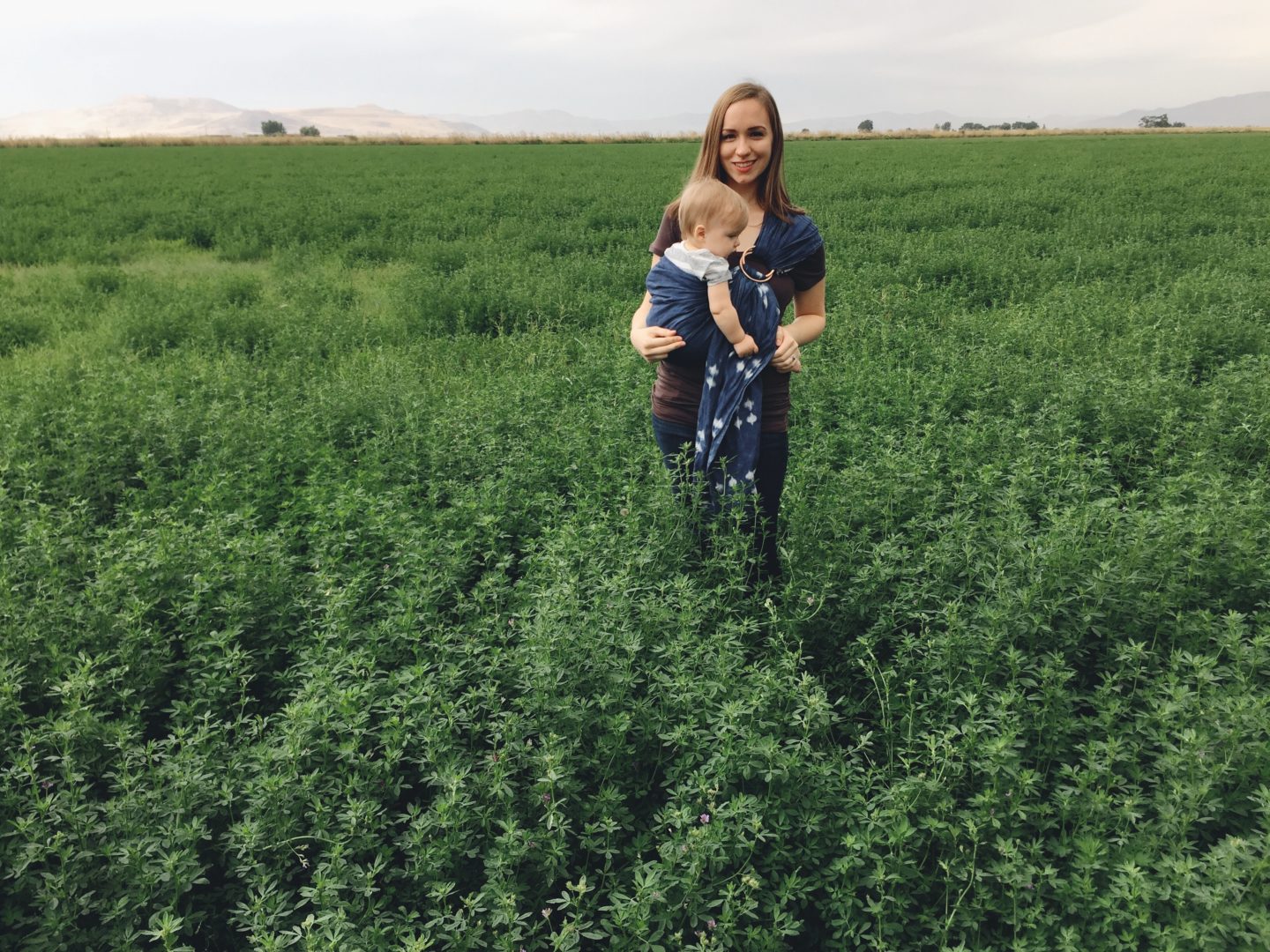
Most people who know or follow me know I love babywearing! As a result, I’ve had several people reach out to me with questions about babywearing, and, just to be safe, I thought I’d just write up an entire blog post with the information I have on the various carriers—that way it’s an easy reference, and I can send it on to others in the future.
So, you want to start babywearing?
The world of babywearing is incredibly vast, and there are several different kinds of carriers, which can fulfill different purposes. Obviously, this will be highly peppered with my own personal opinions and preferences—but they are just my opinions.
Let’s start with a little briefing though:
With any baby carriers, you want baby to be completely supported knee-to-knee—not just supported by the crotch—with their head close enough to kiss, and airways free. Though a very few carriers allow an okay setup for outward facing, it’s best for baby to face the wearer.
So what kinds of carriers are there?
Soft Structured Carriers/Buckle Carriers (SSC):

When people think about wearing their babies, they often think about these. In general, these are the kinds of carriers you saw growing up, and that you’ll see most often out and about. The way you adjust them can vary from brand to brand, but you almost always have an adjustable waist strap, back strap, and straps under the arms, to get that perfect fit.
Pros:
- The seat (where baby’s bum is) is already made for you, and baby won’t be able to get out of it
- These are probably the easiest carriers to learn how to use
Cons:
- Can look a bit clunky. Not all brands have a bulky look, but with the shoulder padding, and suck pads, and other padding, they can have a lot going on
- There are so many SSC out there. if you don’t know what to look for, you can end up with a pretty mediocre carrier
- If you and your partner vary quite a bit in side, like me and my husband do, switching who carries baby can be a nuisance adjusting all the buckles
What to look for:
- Good knee-to-knee support, as there are tons that are not really appropriate
- Shoulder straps that fit you well (different brands work better for narrower or broader shoulders)
- A carrier that adjusts well to your body type (I’ve used one that fit my husband super well, and it worked okay for me with a front carry, but was far too large for me with a back carry)
My favourite SSC brands:
Happy Baby. These are, in my opinion, the best looking SSC out there right now. They aren’t at all bulky, and are make of linen, so they are super breathable. They work great in winter, because they aren’t overly padded themselves, which would work great with you and baby wearing heavier clothing.

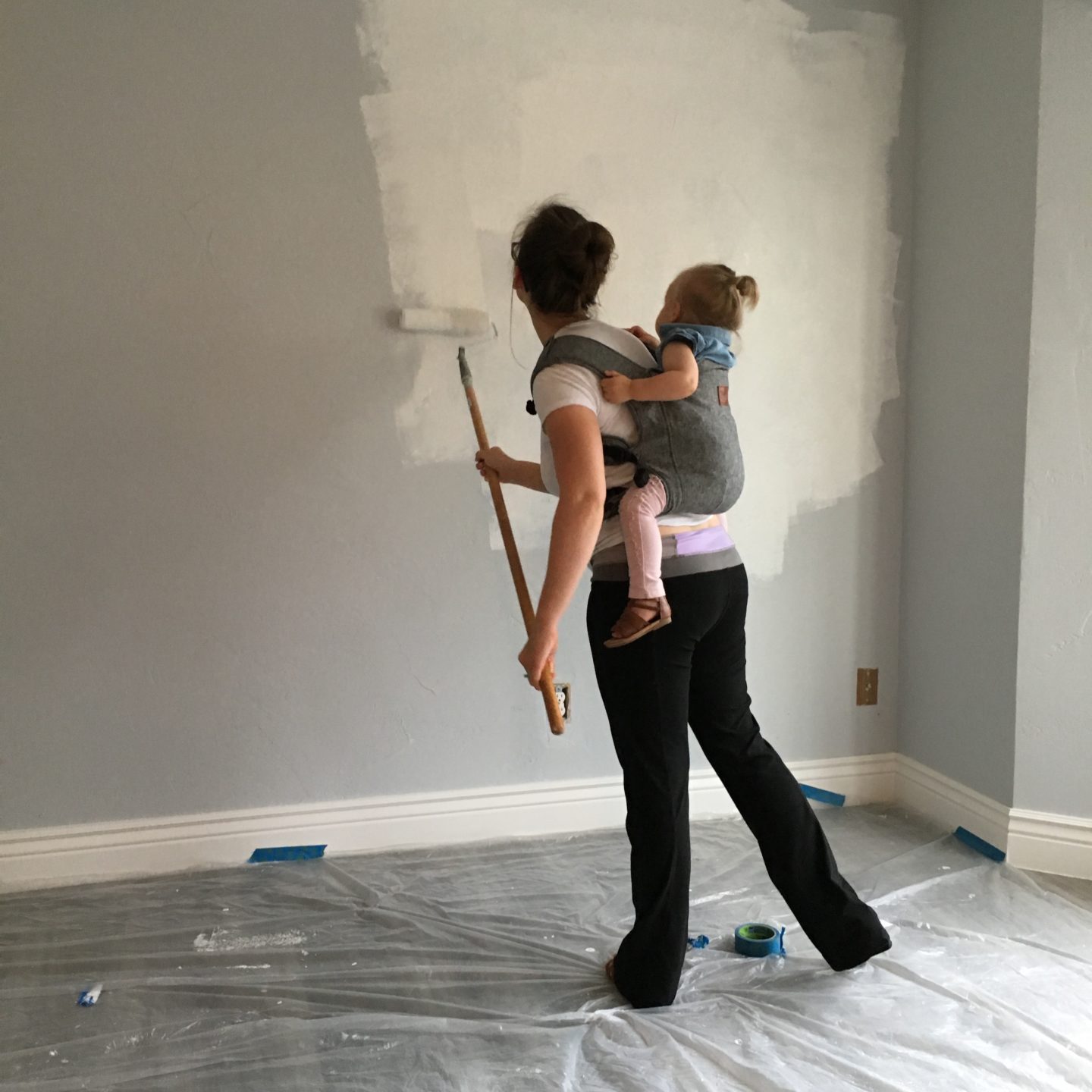
Kinderpack. I’ve modeled for Kinderpack, and they have very comfortable shoulder pads. They do border on a bit big for me in the shoulders, but I’ve super narrow ones. They have a large variety of prints, too.
These next two, I’ve not had any experience with, but I’m very curious, and they’re similar to SSC, so I thought I’d include them here:
Sakura Bloom Scout. This is just like a SSC, but the waistband is like a ring sling. I feel like this could be easier when switching between partners, but I’m also just sort of anti-buckle.
Pros:
- Just like SSC, the seat is made, and it has a waist belt for weight distribution
- The waist band might be easier to adjust between partners
- Sleeker look than a regular SSC
Cons:
- The waist band’s tail is longer
Onbuhimo:
Like a SSC, these have a seat ready for you to put your baby in, and have two shoulder straps, but they don’t have a waist belt. This could be more or less comfortable for you depending on your preferences. My husband likes waist belts, where I don’t. These are also great for anyone with anything going on in the tummy areas (such as pregnancy), as there is nothing there that would get in the way on this type of carrier.
Pros:
- Less parts to deal with when putting on/easier to adjust
- Mostly-made seat
Cons:
- All weight on shoulders
- Figuring out the seat takes a little work
My favourite Onbuhimo brands:
Sakura Bloom. Theirs were what initially turned me onto this type of carrier. They are beautiful, but come with a less beautiful price tag.
Lenny Lamb. When I hear about Onbuhimos online, I always hear recommendations for Lenny Lamb, so they must be doing something right.
Meh Dai:
This is exactly like a SSC, but with woven wrap-style tails for the waist belt and shoulder straps. Personally, I love these, and this is my hiking carrier of choice. There are so many ways you can tie off the shoulder straps—you get the flexibility of a woven wrap, but with the seat of a SSC. This is very helpful for trips where baby might throw a fit, but you need their seat to not pop.
Pros:
- Pre-made seat
- Wrap tails for shoulder straps and waist strap, allowing you to make it as secure as you need it, as well as doing different finished (tie offs)
- Straps require no adjusting when switching between partners!
Cons:
- Wrap tails are long, and will drag the ground when you tie them
- You will have to learn at least one way to tie the shoulders (though it’s not hard)
My favourite Meh Dai Brands:
- Fidella Fly Tai. This is the one I’ve used the most; it’s very comfortable, and even has some padding in the shoulders.
Woven Wraps:
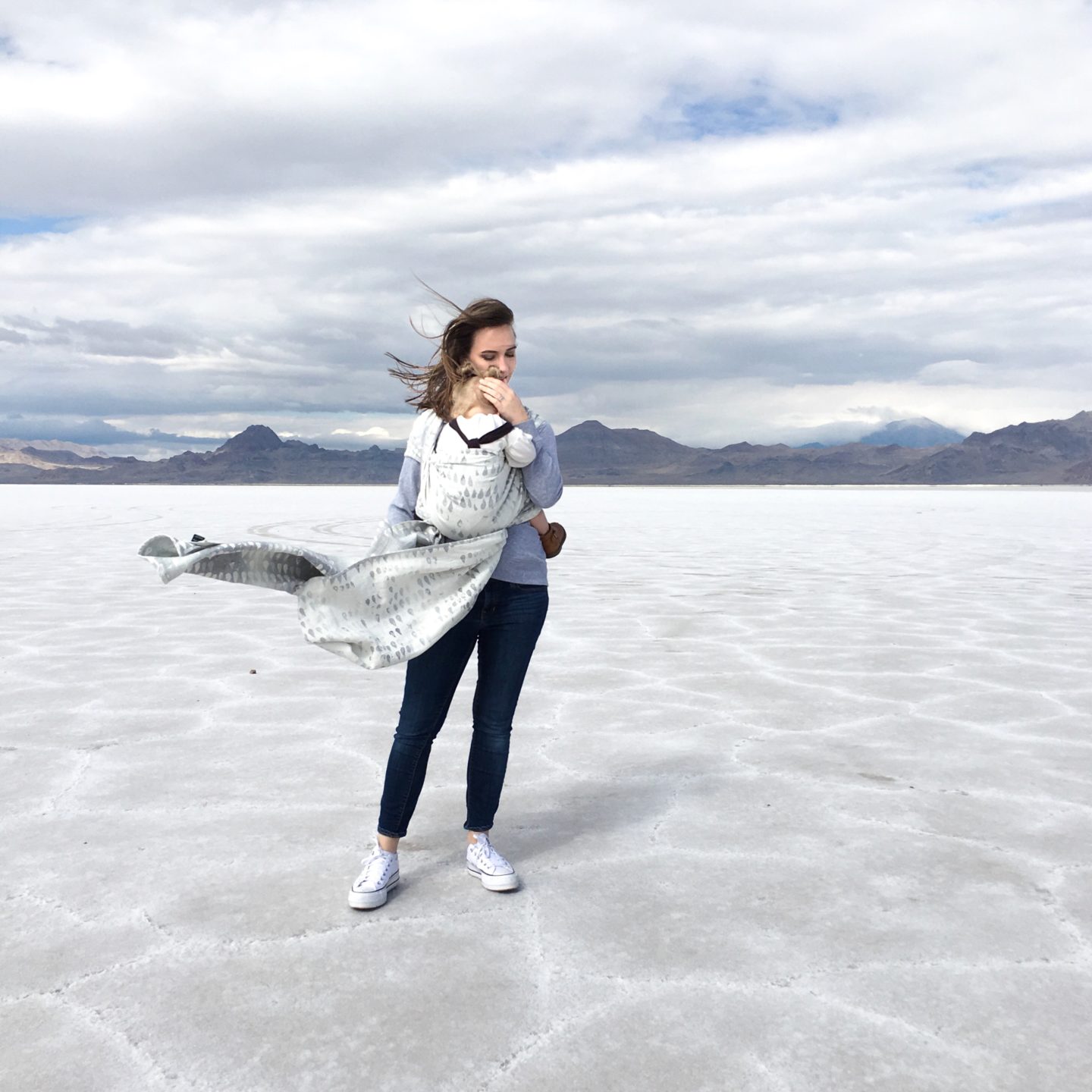
woven wings Here Comes The Rain Again
On to one of my favourites! Woven wraps absolutely the most flexible carrier out there. They come in a huge variety of lengths, and fabrics. Women all over the world (up until the senseless Victoria Era) carried their babies like this. This type of carrier has the steepest learning curve, but it is so worth it. It’s not that hard—you don’t have to be super fancy! If you’re looking for a baby-related hobby/art this will also help you out there. A good wrap job takes practice, and it’s definitely more impressive than just throwing on a SSC. There are tons of YouTube tutorials for different carries, as well (check out Wrap You in Love).
Pros:
- Huge room for flexibility. Short wraps are easy to travel with, but long ones allow for super supportive/unpoppable carries
- They are made of all sorts of things: 100% cotton, linen and cotton, tri-blends—you name it! Plus, a wide variety of patterns means you’ll probably find something you love
- You get to connect to generations of mothers before you: carrying your baby the same way
- Woven wraps can also be made into ring slings, onbuhimos, meh dais, etc. So you can get the carrier you prefer in the colorway/fabric blend you like best
Cons:
- Steeper learning curve
- The information (about sizing, materials, brands) can seem overwhelming at first
- You may still want another carrier, if your partner doesn’t want/have the time to learn
- If baby is really wanting down, they may “pop” their seat, and you’ll have to re-wrap, or take them out
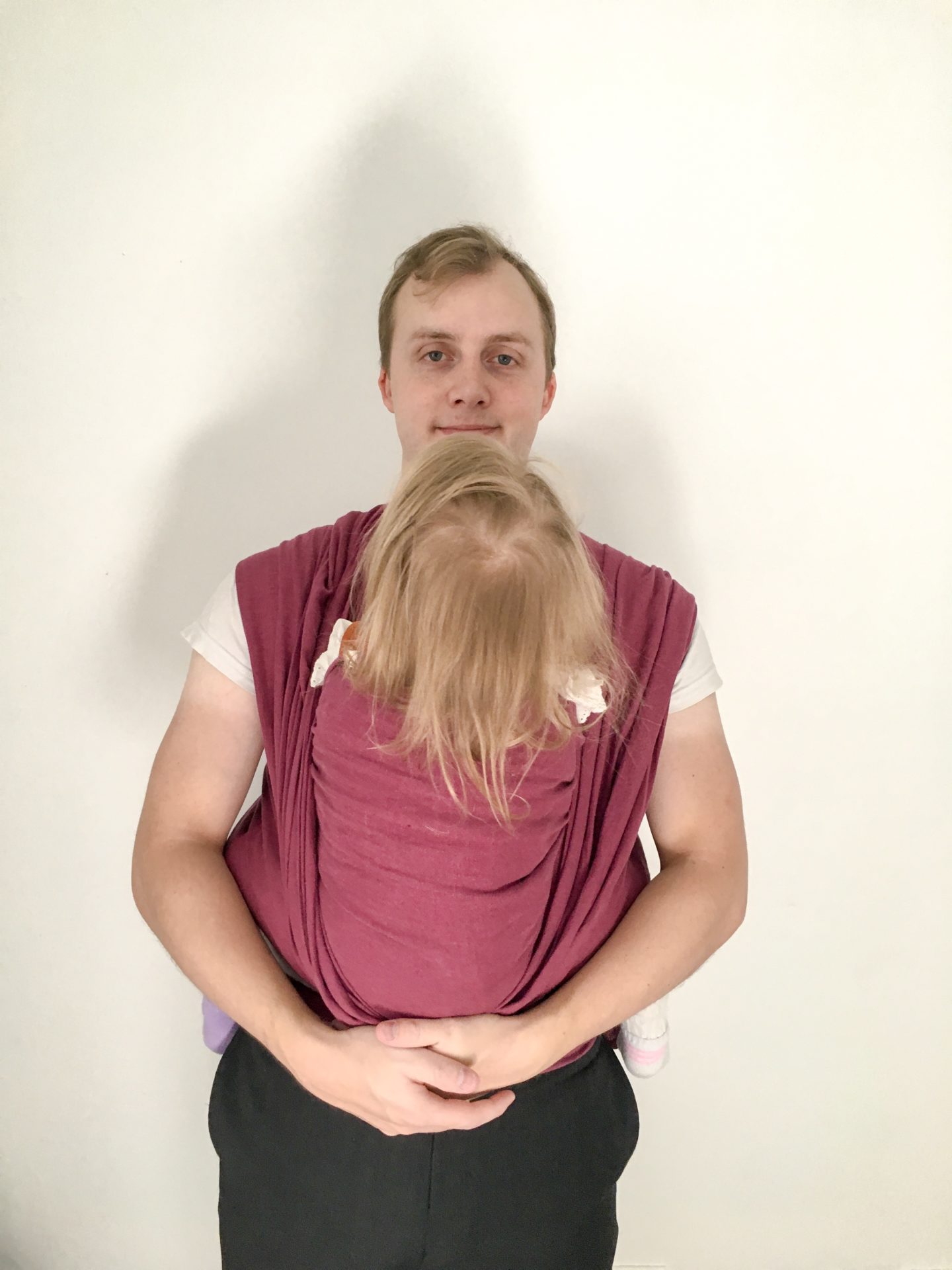
What to look for:
There are a lot of options in the wrap world, but let’s start with common fabrics used—keep in mind, blends exist that can have 2-4 of these—cotton, linen, silk, wool, hemp (fabric descriptions below, under “Ring Slings”). Wool and hemp are pretty unique to wovens.
Wool – excellent for regulating temperature. Think wool is only for winter? Think again—this fabric works well for all seasons. Care is higher-maintenance, and some find it to be scratchy.
Hemp – breathable like linen, but a little ticker, and great for supporting toddlers. Can be a bit stiff, at first, but is lovely, once ‘broken in’.
Handwovens – these are expensive—due to the manufacturing—but ordering one allows you to choose specific colors, and patterns, if you’re willing to pay.
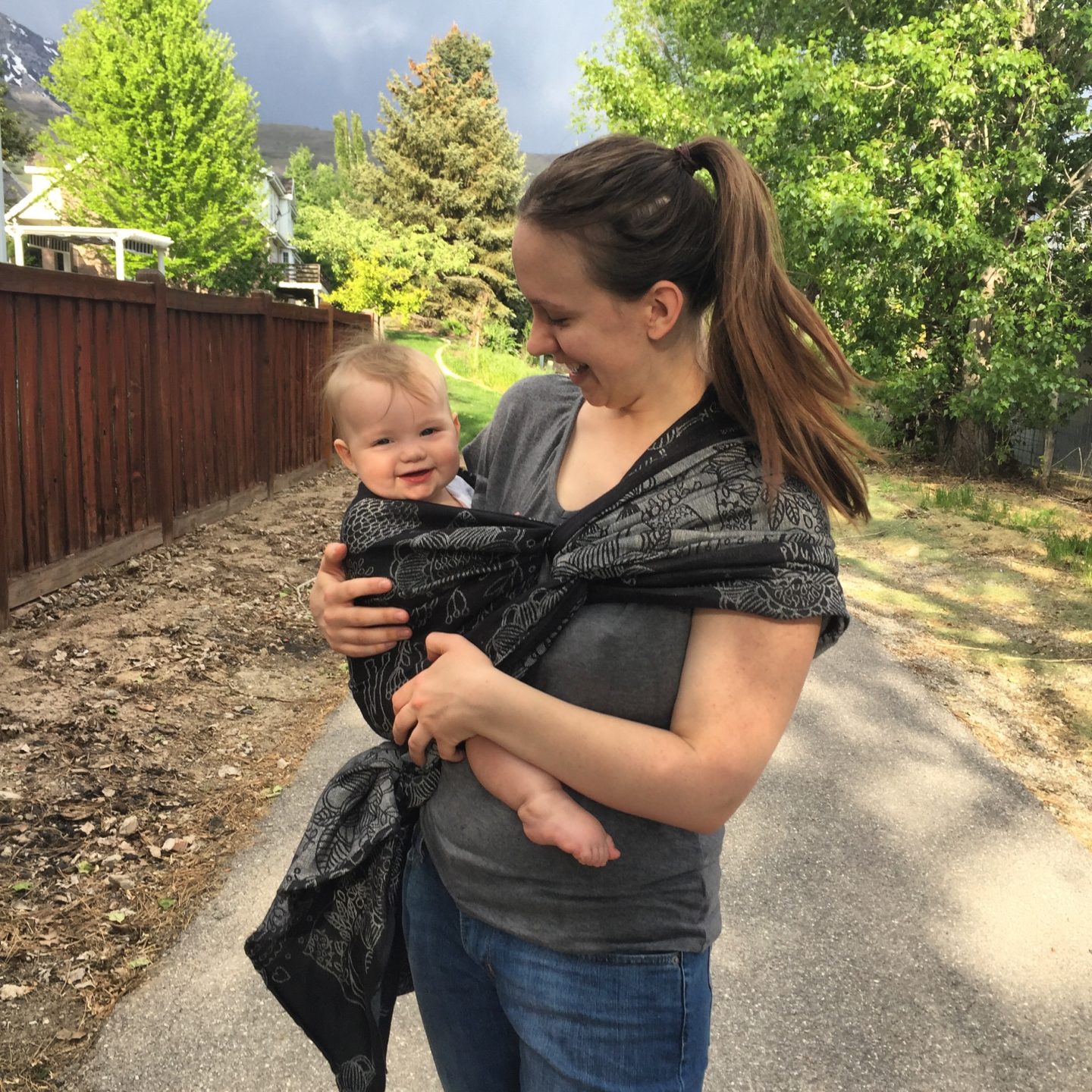
didymos monochrome magic forest
Once you know what kind of fabric interest you, you’ll need to assess the GSM, which is just the thickness or thinness, or weight, of a wrap. Everyone who wraps has a preference, with some loving super-thick wraps, and others refusing to use anything that’s not thin in hand. Very basic rules are:
High 200s (say, 280) and above: thick – these can be harder to work with, as they require more muscle to get tight, and are hander to tie, but can be very cushy.
Low 200s (say, 220) and below: thin – great for summer, and keeping cool, these will be easy to work with, but not super supportive for bigger babies.
Everything in between: mid-range – great for beginners, and the majority of wraps fall into this category. Depending on the exact GSM, there’s still a good range for different thicknesses.
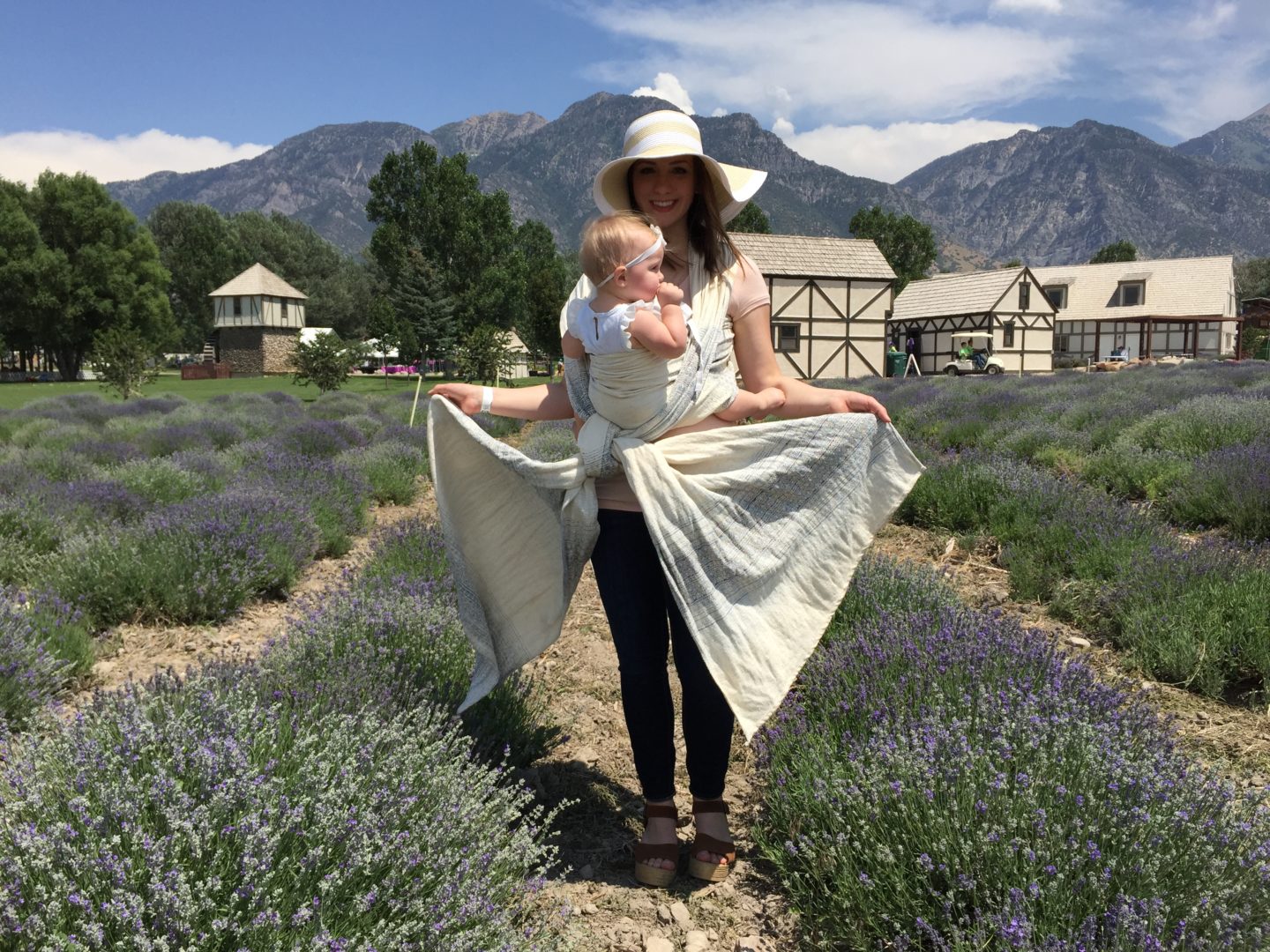
didymos shades of blue
You’ve chosen a wrap based on fabric, and GSM, but now you have to select a size. Sizing can seem a bit confusing, but it’s basically:
Size 1 – 2.2 meters (87 in.)
Size 2 – 2.6 meters (102 in.)
Size 3 – 3.2 meters (126 in.)
Size 4 – 3.6 meters (142 in.)
Size 5 – 4.2 meters (165 in.)
Size 6 – 4.6 meters (182 in.)
Size 7 – 5.2 meters (205 in.)
Shorter wraps are good for some situations, and longer wraps are good for certain carriers—but for your first, you’ll want to go with your base size. This means the size that will allow you to do a Front Wrap Cross Carry (FWCC) with the wrap tied in the back. Generally, this size allows you to do most other carries, especially with a child under 2. As your baby gets older, or you want to do carries with more passes, you may want to go up. Shorter ones are good for simpler carries, and hot weather, where you might want less fabric.
You can calculate your size here. I was between a 5 and a 6, but went with a 6, as that was my husband’s base.
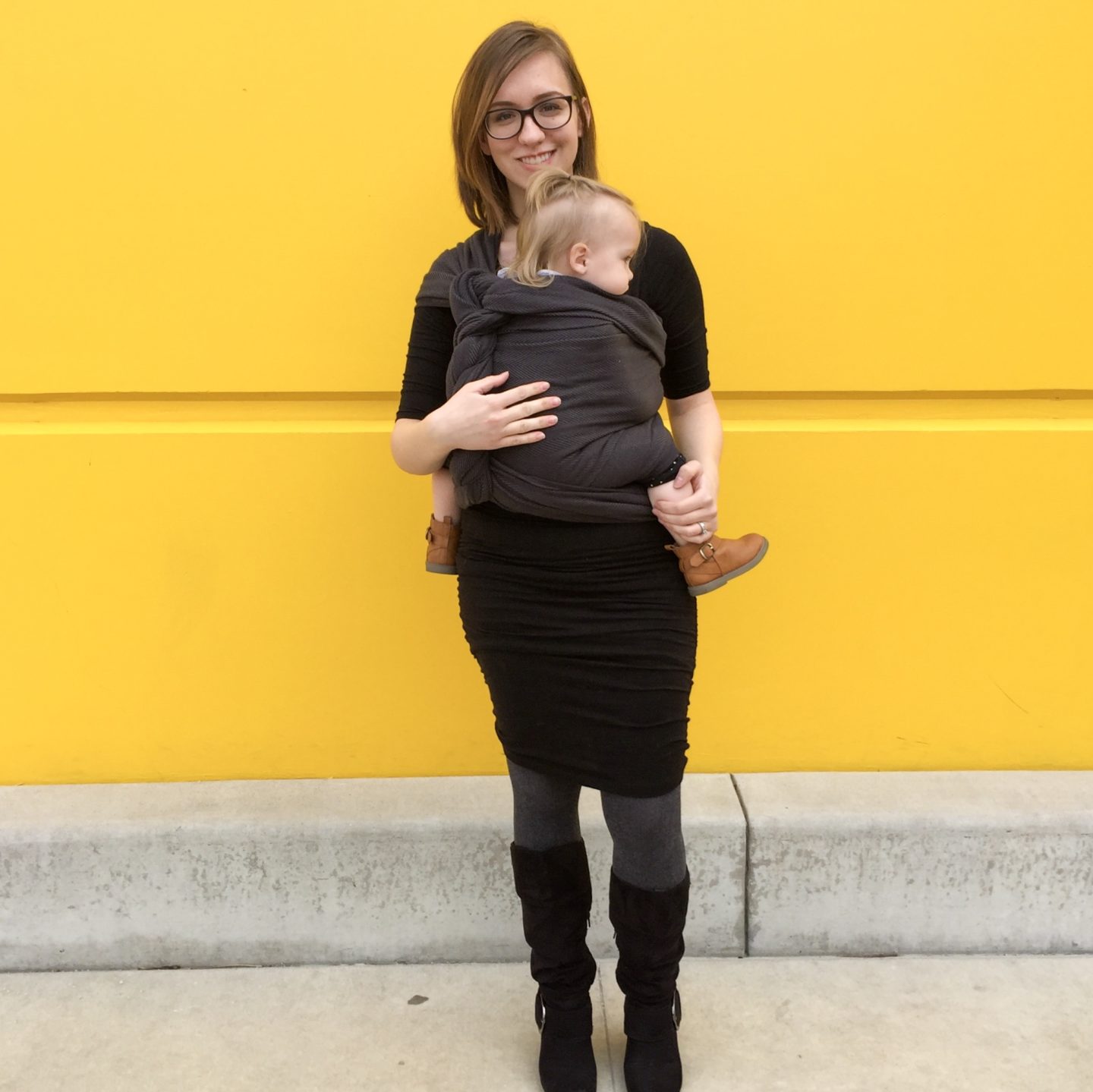
didymos lisca in the color obsidian
Wrapping terminology is easy, once you have your base, too. If my base is 6, and I want to try a carry that needs a ‘base+1’, I’ll use a size 7. If I need a ‘base-2’, I’ll be using a size 4.
My favourite Woven Wrap brands:
Didymos. A classic. Established, and with a variety of colorways, blends, and prices, you’re sure to find something you love from them; and they’re great quality.
Pavo. Also has some reasonably-priced, nice quality wraps.
Woven Wings. Much higher-end, but my dream wrap was from here, so I had to include them. Gorgeous patterns and colors.
There are SO MANY woven wrap brands, I can’t list all the ones that have beautiful wraps. Each brand has it’s own style, and, if you get into it, you’ll find something you love!
Ring Slings:

wildbird sandpiper
These have honestly been my go-to with my baby (even though I think wraps are the best). Like an Onbuhimo, they may only be comfortable for so long, depending on how heavy your baby is. But they are also the most convenient carrier.
If you don’t just have a woven wrap converted into a ring sling, you can get your ring sling from a brand that focuses on those. Usually those companies have linen, or linen/cotton chambray, double chambray or linen (made from two thinner pieces of fabric), or 1.5 (made form one thicker piece of fabric). There are plenty of other fabrics, too. Plus, most companies do long length slings, if the regular doesn’t leave you with enough tail, or if you’d like to back carry.
Pros:
- Can wear it around, even without baby in it
- Easy to use
- Great for long trips where you don’t have room to use a long woven comfortably
- Perfect for days with lots of putting baby up and down, because it’s so quick
- Looks very minimal and clean
- Can back, side, and, of course, front carry in them
- Can be used newborn to 35 lbs! Great if you don’t want very many carriers!
Cons:
- A little learning curve to figure out the rings, and the seat (the seat is just like in wovens)
- Only one shoulder, so can strain it if you’ve got a heavy baby/wear all day
- Can hurt shoulder if you don’t cap it right.
What to look for:
The trickiest part for new slingers is choosing a fabric. Here’s a brief overview of the most common fabrics:
Linen – 100% linen, dyed after it’s woven. Super breathable, and gets softer with use.
Pre-softened Linen – if they have it, go for it! The easiest fabric to use, as it’s soft and floppy
Chambray – linen, or sometimes linen/cotton. The threads are dyed before it’s woven, so you can have multiple colored treads. That’s all it means; though I do find these to be thinner, and slipperier in the rings.
Dupioni Silk – think the shiny, lux-looking silk. Strong, and smooth.
Matka Silk – a blend of linen and silk. Unusual texture that is very supportive, an extremely breathable. Takes awhile to ‘break in’, and the texture isn’t for everyone
Cotton – easy to use with good stretch; strong and supportive, too. I personally find it a bit hot in the summer in Utah, though.
Bamboo- extra soft, and easy to work with, though slightly less eatable than linen. The care is more work that with many of the others, but not difficult.

My favourite Ring Sling brands:
–Proverbs31Heart, soon to be called Love Held. Maranda, the owner, is amazing, and so sweet. He slings are the very softest I’ve ever used, and she is an amazing communicator. I also hear her packaging now has wildflower seeds in it, so that’s also awesome.
There’s a million others out there, too: Sakura Bloom, True North, Vienna Springs, Hope & Plum, and, of course, Wildbird to name a few.
Stretchy Wraps:
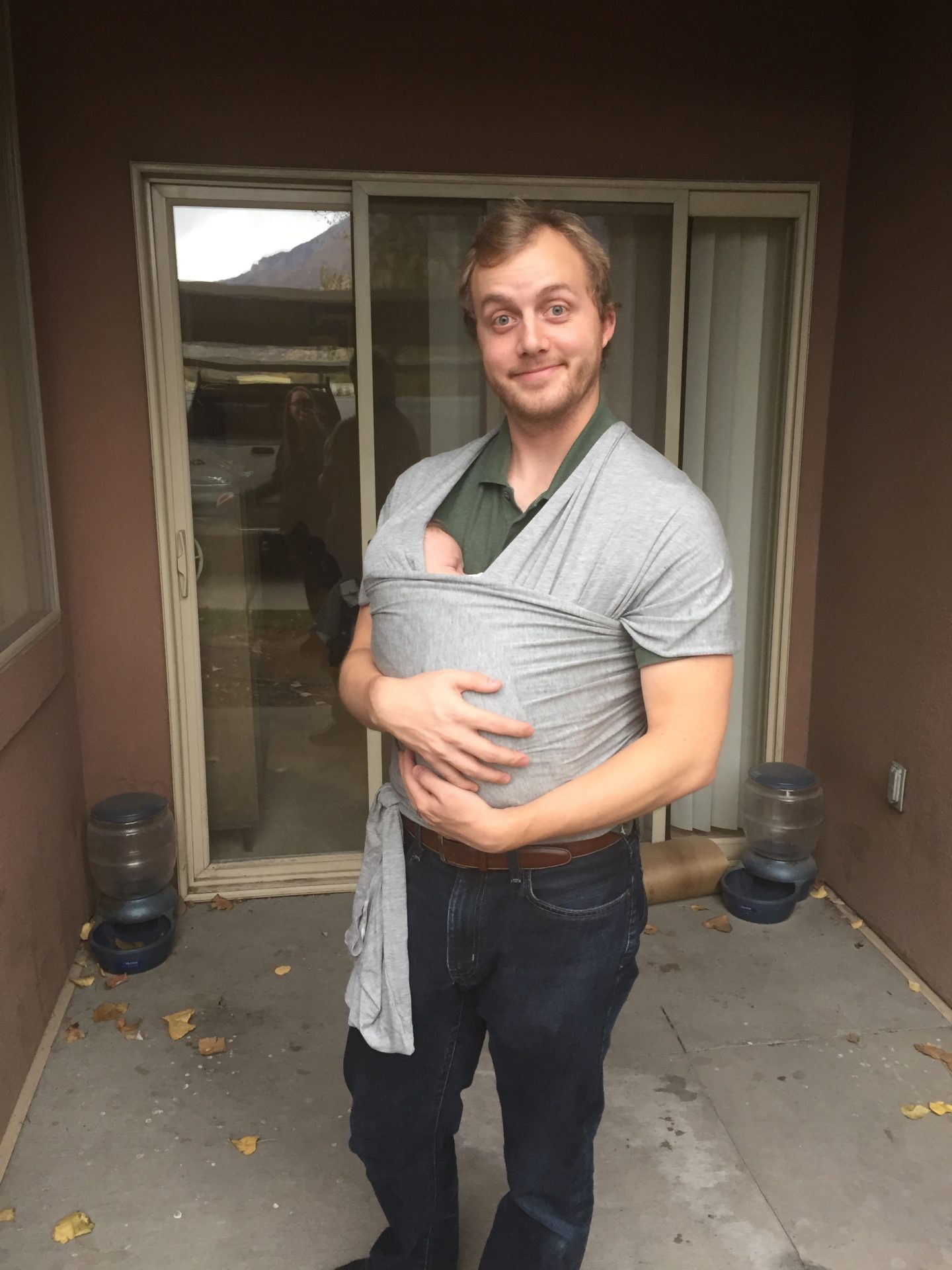
These are things like Solly, Moby, etc. They are super stretchy, so more forgiving that wovens, but worn similarly to wovens. This is what I used for my newborn baby, because I was a bit intimidated by wovens.
Pros:
- Good if you want to use wovens, but want to start with something more forgiving (though that’s totally unnecessary, as plenty of wovens are easy to use, and have some stretch)
- Easy to get, as they are all one size
Cons:
- Not really necessary if you want to use wovens
- Only truly work well up to about 12 lbs
- Can only be used for one carry safely
My favourite Stretchy brands:
Solly. They are established, but, again, there are better, more cost-effective options, and I personally don’t feel like these offer enough to bother much with. I plan to use a ring sling with any future newborns.

Caring for your carriers:
With most carriers, it’s best to wash them first. This is also important as fabric fibers shift, which can be less safe; plus you want them clean. Be sure to get a gentle detergent (I use Euclan) that’s free of optical brighteners, so that your carrier doesn’t lose any color/get splotchy. Unless you have multiple carriers with the same colorway, you’ll want to wash them separately, too.
When it’s time to dry, it’s safest—and often recommended—to hang dry, though some people put carriers in the dryer on low until damp, then hang dry.
Once your carrier is dry, depending on what kind it is, you may want to steam iron, or used steamer. This is especially true if your carrier is linen or linen blend, as it can ‘permacrease’. Some find this process quite soothing. There’s a good chance, especially for woven wraps, that your carrier will be much fluffier now!
You can then roll, hang, or fold to store until you need to use it.
Breaking in Your Carrier:
For woven wraps, and ring slings, especially, ‘breaking them in’ is very beneficial. When you get a brand new carrier, you’ll notice it’s probably pretty flat, and possibly stiff. This makes it harder to work with, which is why you want to break it in. Washing helps a bunch, though some blends feel ‘crispier’ after hanging dry. Other ways you can break in your carrier are:
- Leaving it your car when it’s hot out
- Sleeping on it
- Braiding
- Run it through the rings (for ring slings)
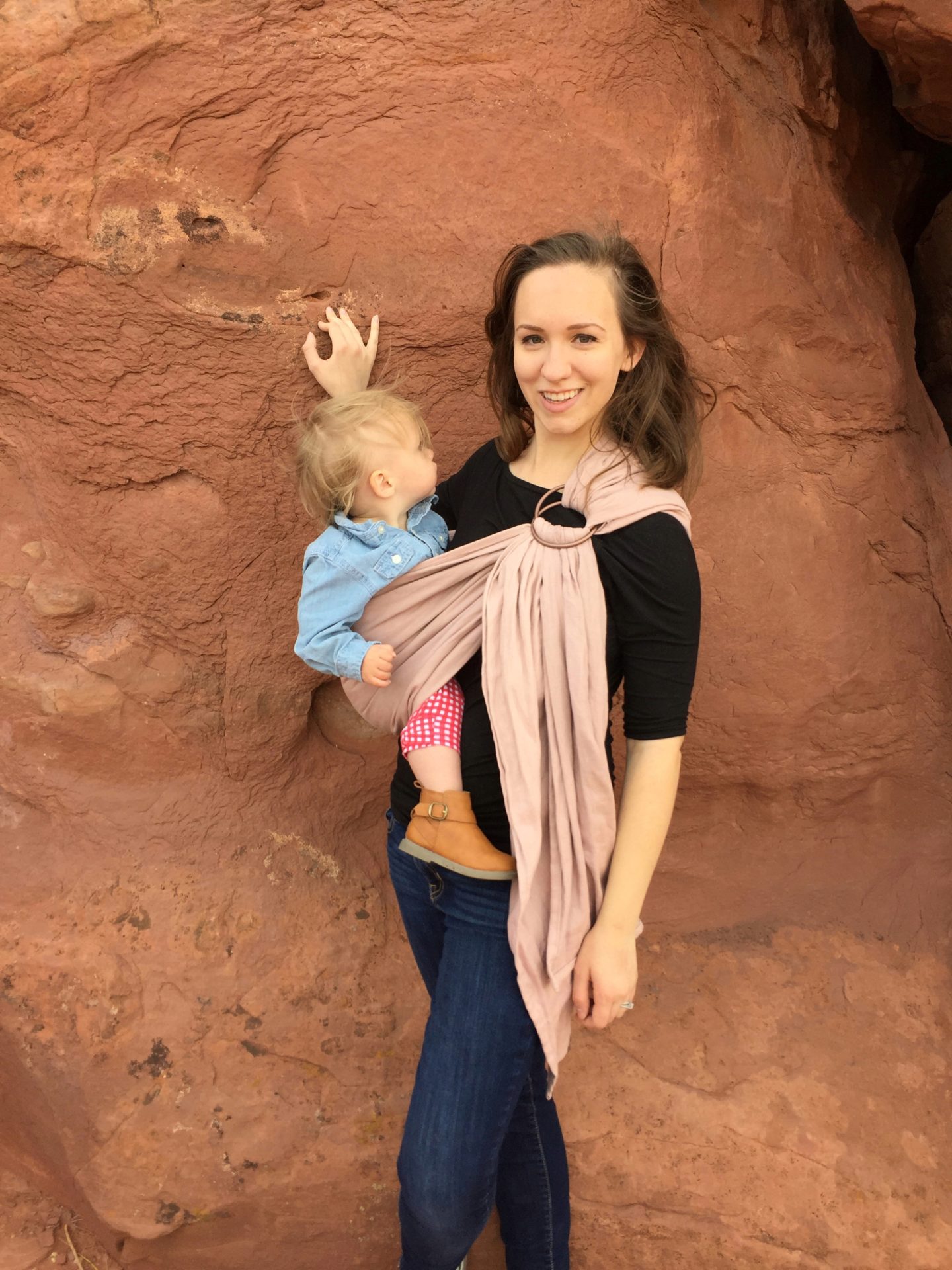
And that’s my basic-yet-complete rundown on carriers. Whether you’re in the market for a new carrier, or completely new to babywearing, I hope this helps!
If you’re interested in a specific kind of carrier, but not sure you’ll like it (the fit, or working with it), or you’re having a hard time with your own, I cannot recommend enough: go to your local babywearing group! They have trained educators who can help you learn more, and get the perfect fit. Plus, you can try on, and check out, carriers from their lending library. This can allow you to ‘test drive’ before you buy a carrier yourself.
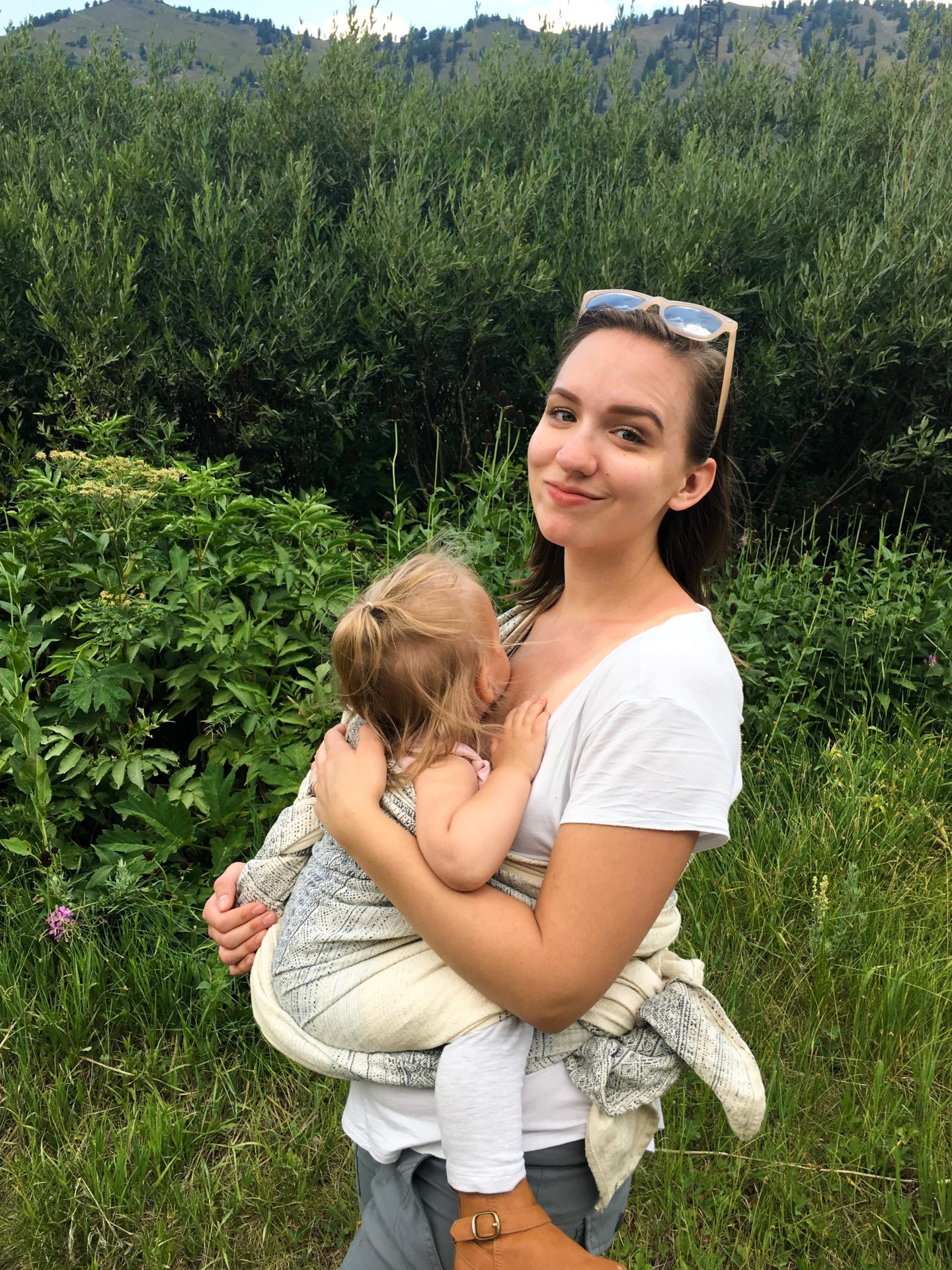
To buy new carriers, you can, of course, go to the brand’s website, but there are some other options, too.
Online Stores:
Also, check out Facebook to get some great deals on used carriers. (In this post, for two word bands, I’ve linked to the Facebook groups in the second words) Most brands have BST (Buy, Sell, Trade) groups, but these are good for everything:
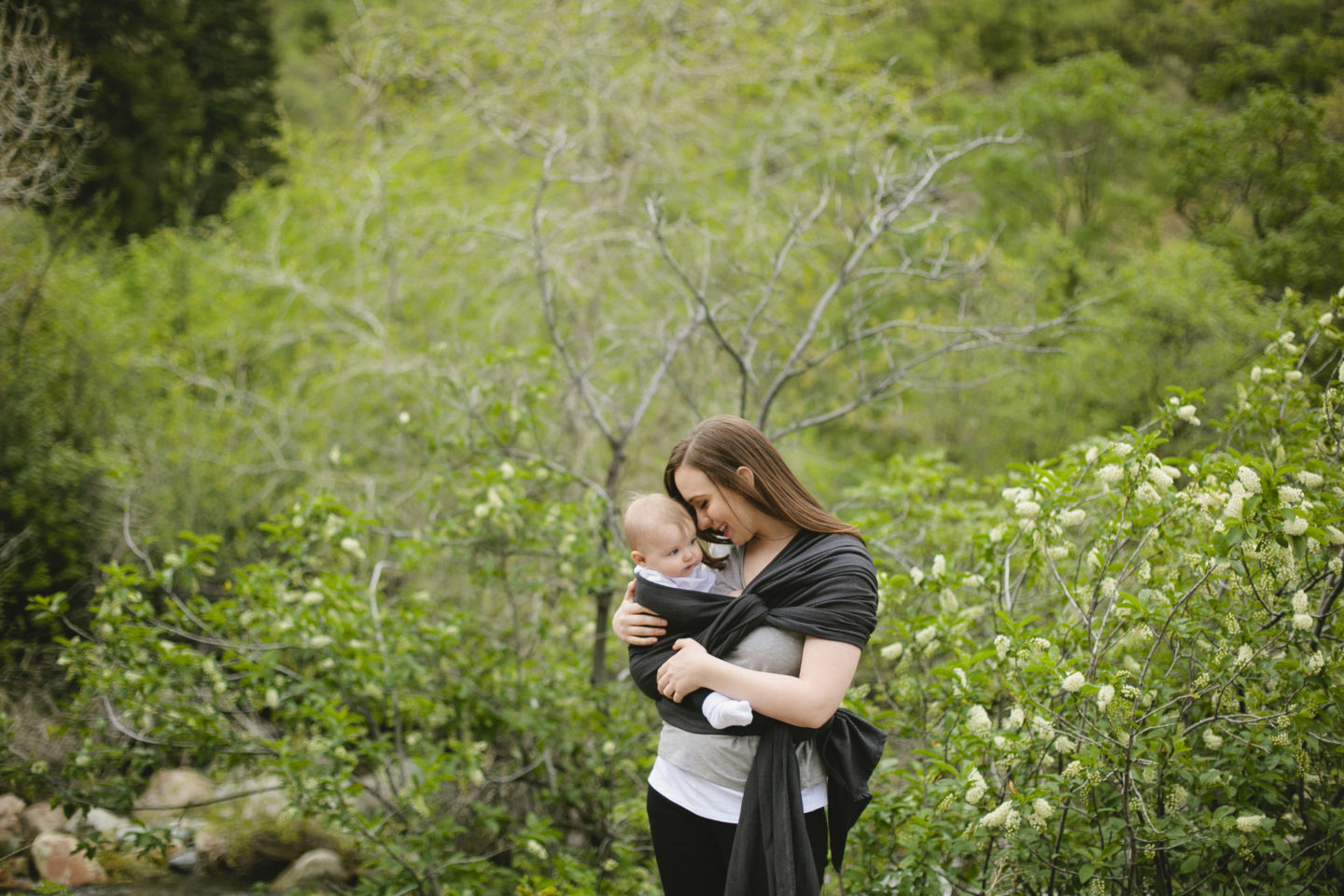
Happy babywearing!


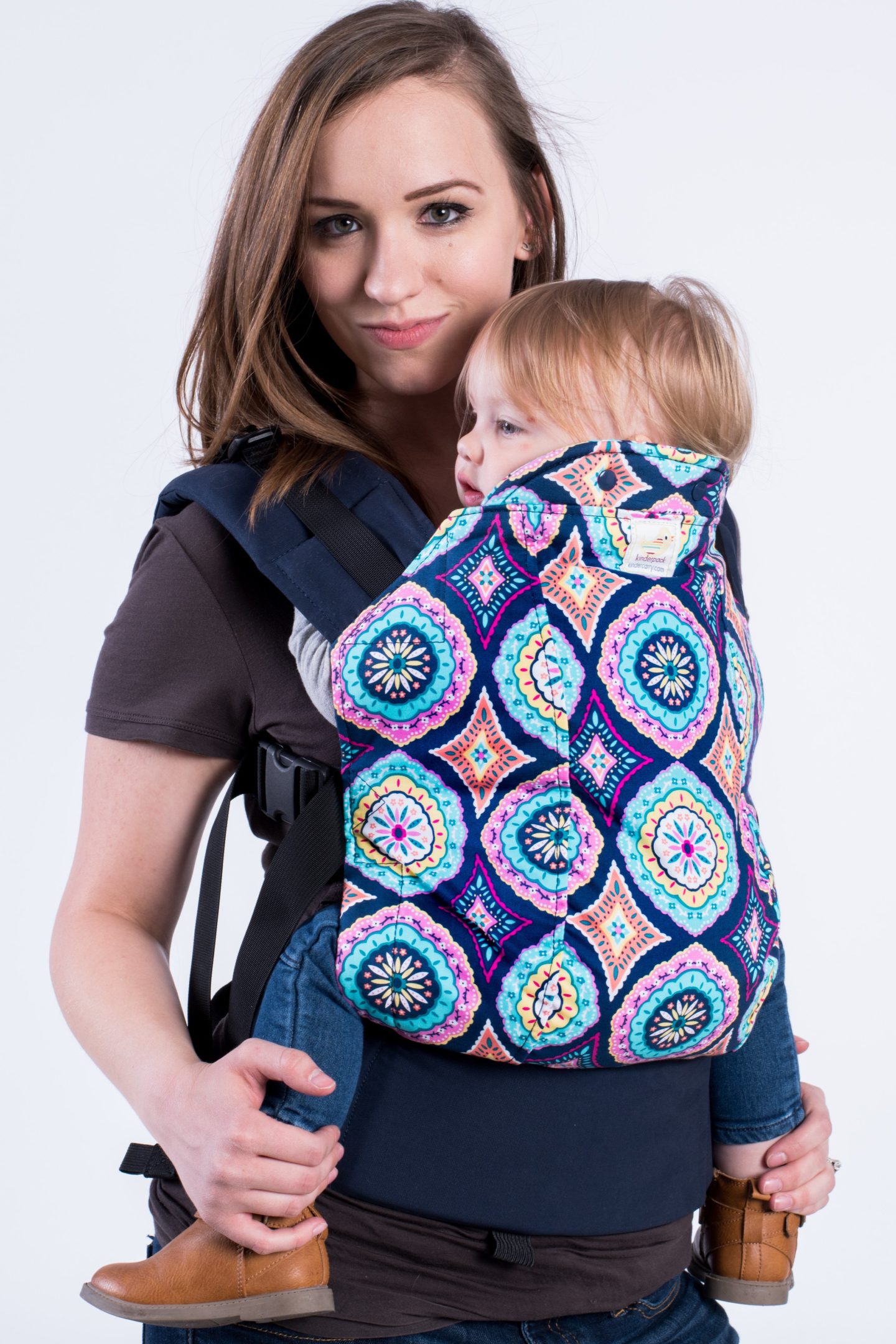

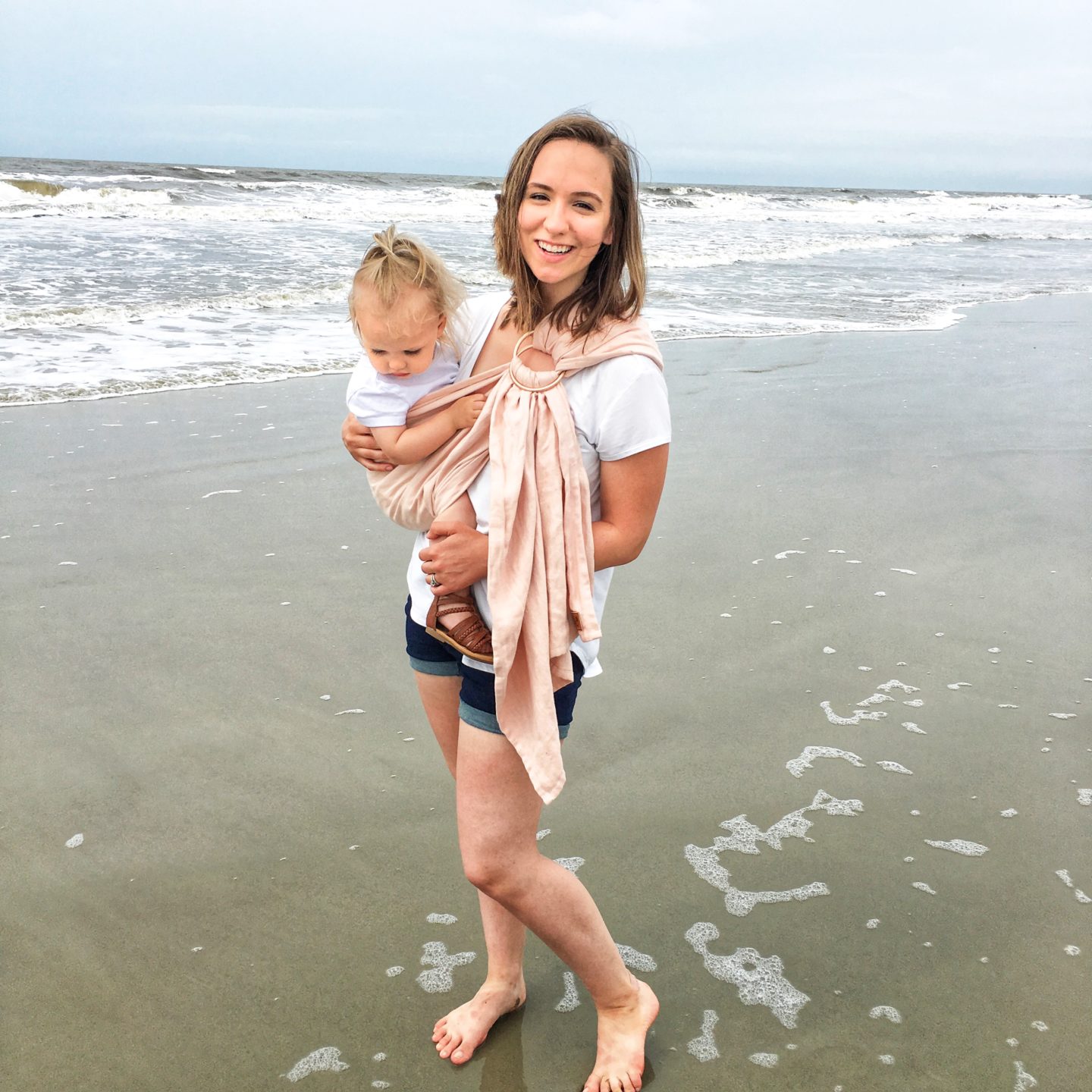

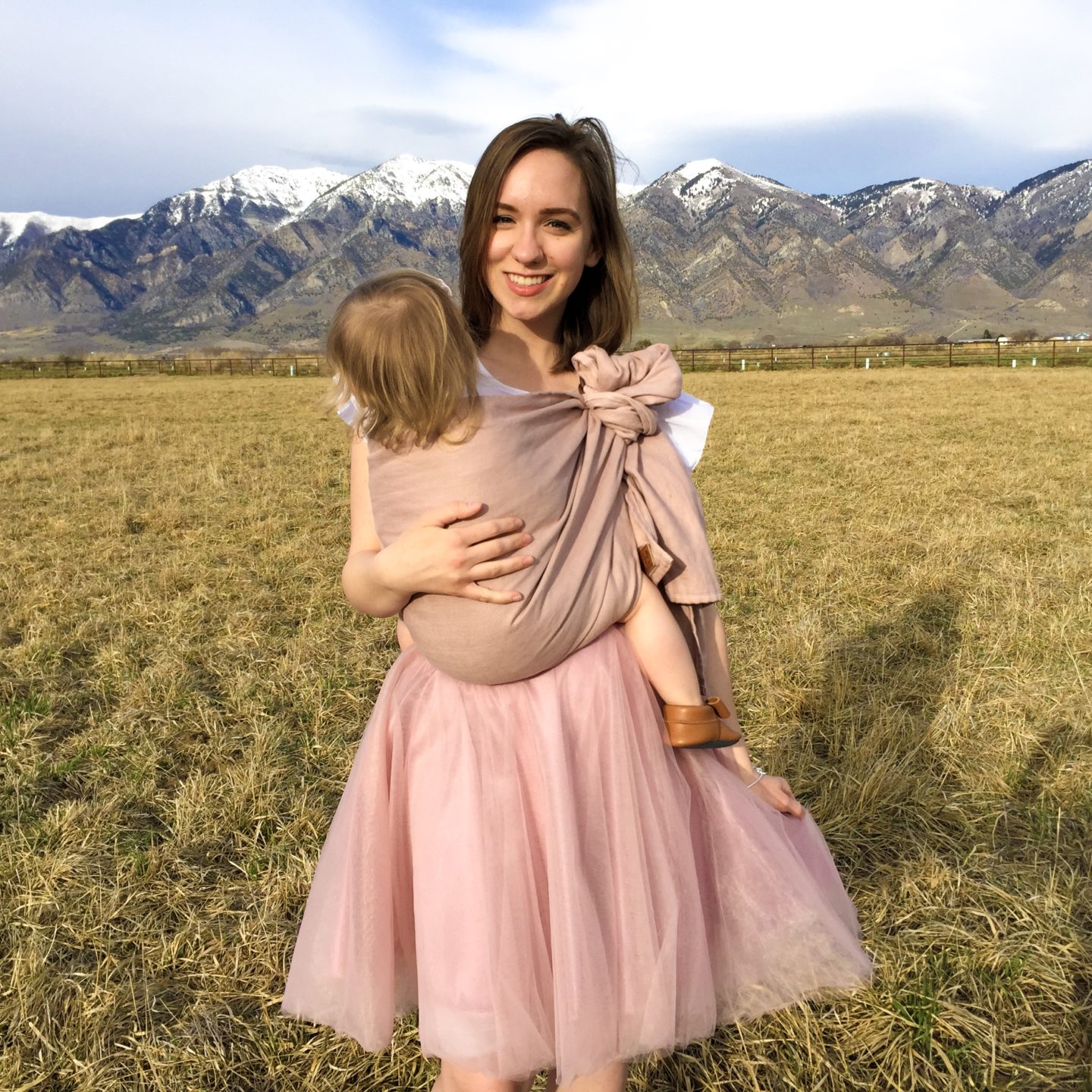
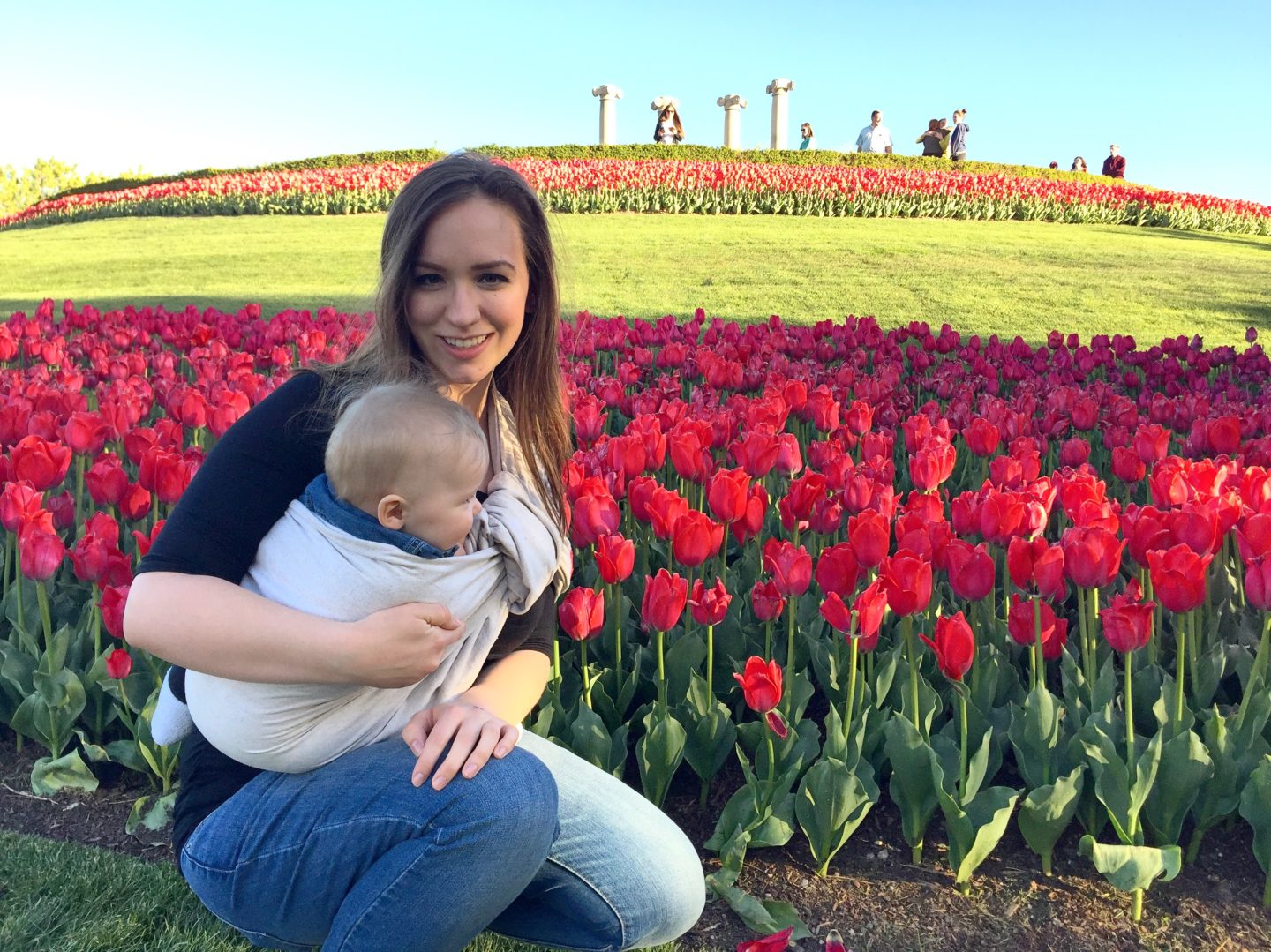
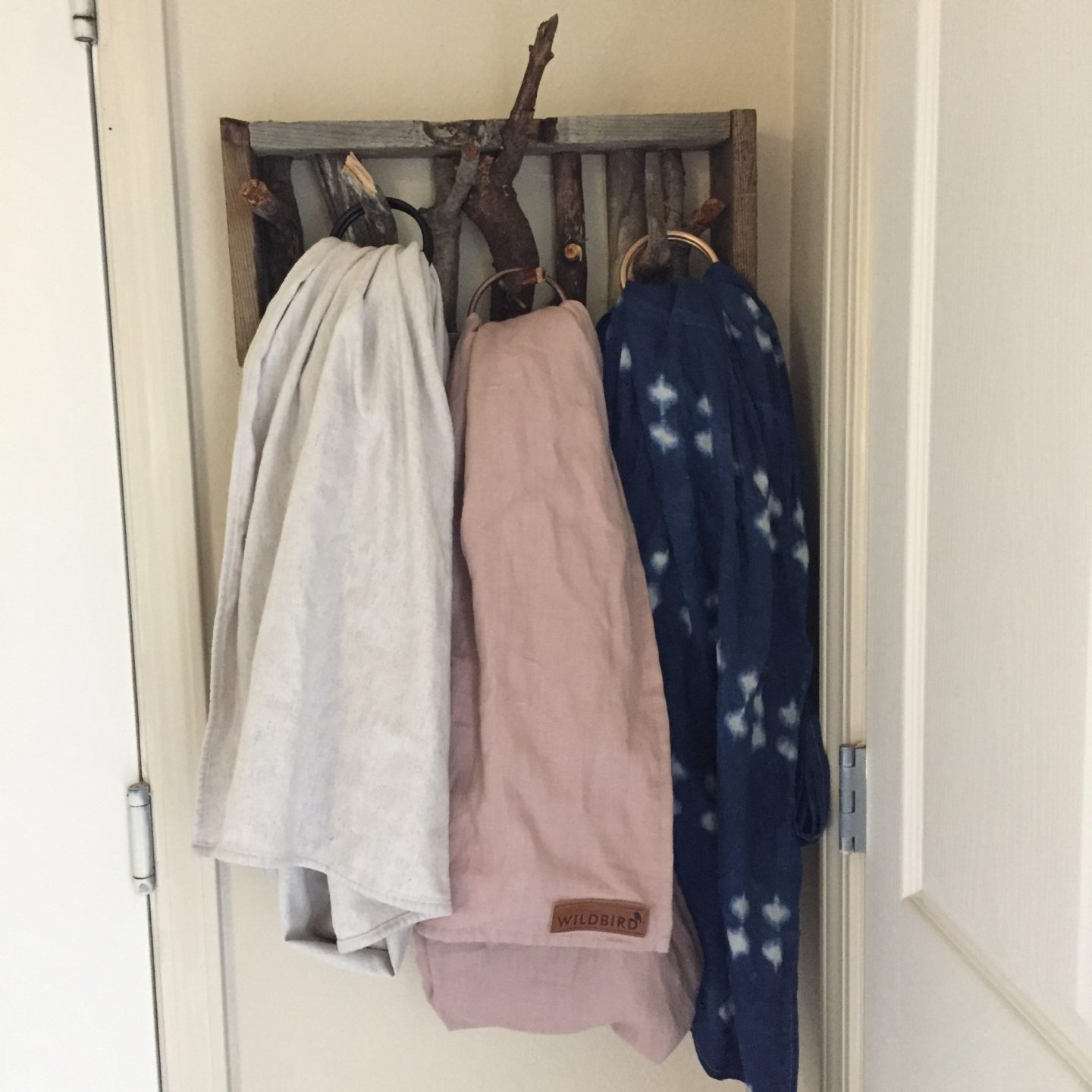

No surprise what your favorite is! Lol Everyone is so different, I believe baby carriers are like jeans and we all have to try them all on before we find what works for us best.
I love love love SSC over all others. I wrapped when my son was a newborn but you’re right, at 11 lbs I was done bc it was heavy and uncomfortable after only 30 mins. I LOVE my Lillebaby Complete all seasons from baby to toddler and then my Lillebaby Carry-on from 3 to 5 yrs old.
For hiking I preferred my Onya Baby Pure. It’s what it’s made for with it’s full mesh panel and zip closure for rain or cold temps. It’s the lightest SSC and dries the fastest! It’s has a nice thick waistband which provides the wearer a lot of support which is good bc it’s rated up to 50 lbs but weight tested for 75 lbs!
It’s so true–even among the same favourite carrier everyone’s got a different preference. I haven’t tried a Lillebaby, I don’t think; but that Onya sounds amazing!